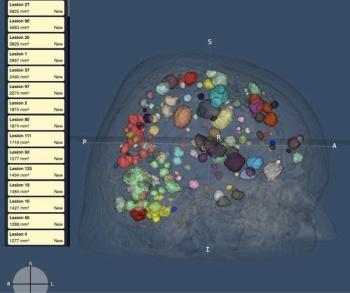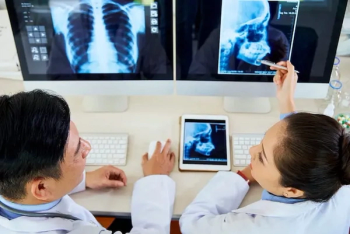
Emerging Insights on Improving Radiology Workflows
In a recent video interview from the Radiological Society of North America (RSNA) conference, Tessa Cook, MD, PhD discussed new research on automated de-identification in radiology reports and the potential of artificial intelligence (AI) and natural language processing (NLP) to help address time-consuming challenges in the radiology workflow.
While increased imaging volume remains a daunting challenge in radiology, emerging developments in artificial intelligence (AI) and natural language processing (NLP) may help alleviate worklist fatigue.
In an interview from the recent RSNA conference, Tessa Cook, M.D.,Ph.D. spoke about the potential of NLP to assist with imaging protocols in radiology, the capability of AI to streamline radiology workflows and recently published research on an emerging model for automating de-identification in radiology reports.
Along with colleagues from the University of Pennsylvania and Stanford University, Dr. Cook co-authored a recently published study assessing a new model that provides automated de-identification for radiology reports.1 While she noted an abundance of de-identification tools for DICOM data and the likelihood of that capability being built into PACS for many radiologists, Dr. Cook said this is more challenging for protected health information (PHI) in radiology reports.
“The distribution of (PHI) data is very different for radiology reports than it is for medical text,” said Dr. Cook, an Associate Professor of Radiology, Chief of 3-D and Advanced Imaging and Director of the Center for Practice Transformation in Radiology at the Hospital of the University of Pennsylvania.
Dr. Cook noted that NLP could help ease the time-consuming nature of assigning imaging protocols given the existence of large quantities of training data that can capture the homogeneity of an imaging practice. She added that AI could be beneficial for more quantitative tasks such as comparisons and the tracking of lesion measurements over time.
“There are so many use cases (for AI). I think the ones that are going to succeed are the ones that are going to make the radiologist workflow more straightforward and more efficient,” said Dr. Cook.
For more insights from Dr. Cook, watch the video below.
Reference
1. Chambon PJ, Wu C, Steinkamp JM, Adleberg J, Cook TS, Langlotz CP. Automated deidentification of radiology reports combining transformer and “hide in plain sight” rule-based methods. J Am Med Inform Assoc. 2022 Nov 23;ocac219. doi: 10.1093/jamia/ocac219 . Online ahead of print.
Newsletter
Stay at the forefront of radiology with the Diagnostic Imaging newsletter, delivering the latest news, clinical insights, and imaging advancements for today’s radiologists.




